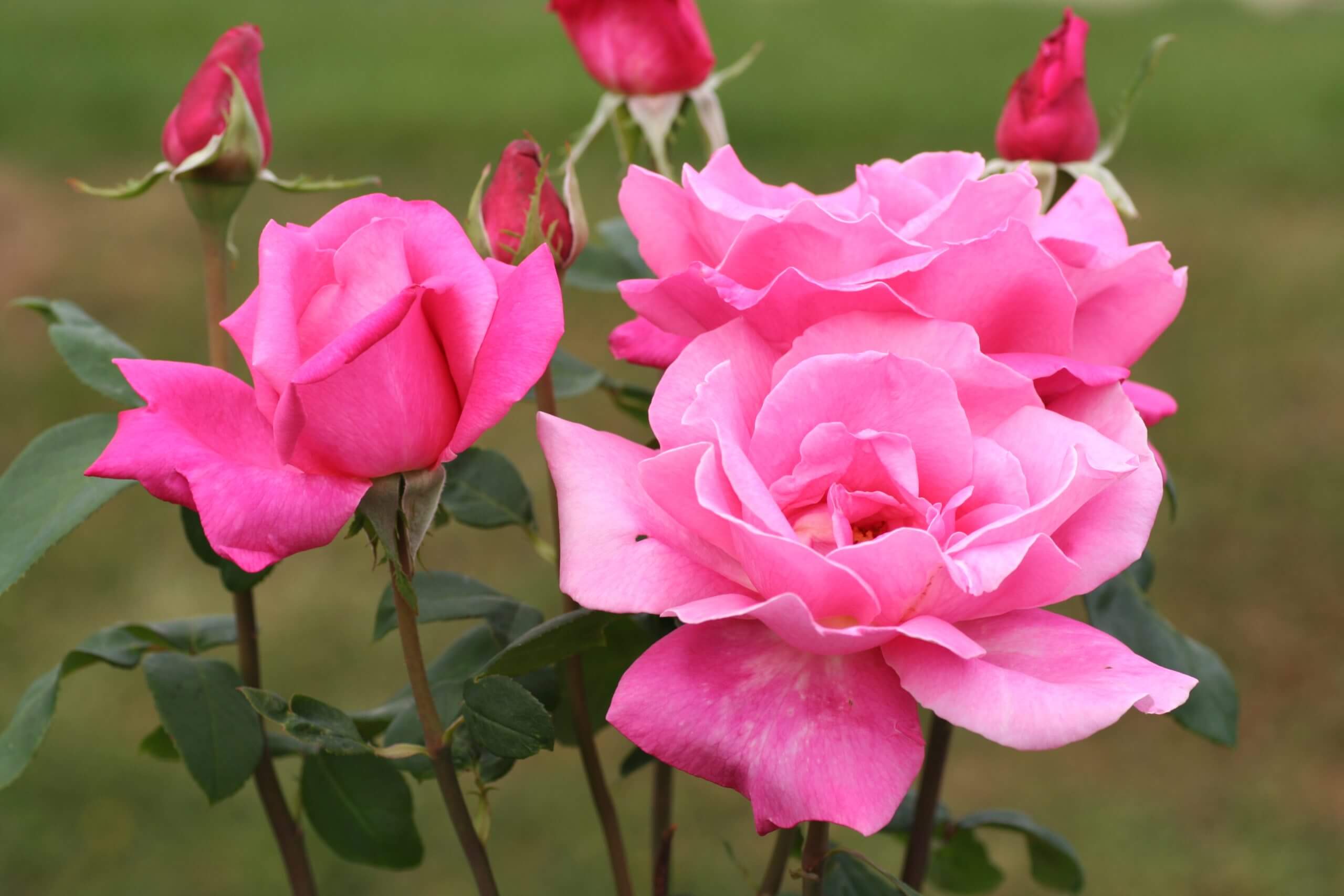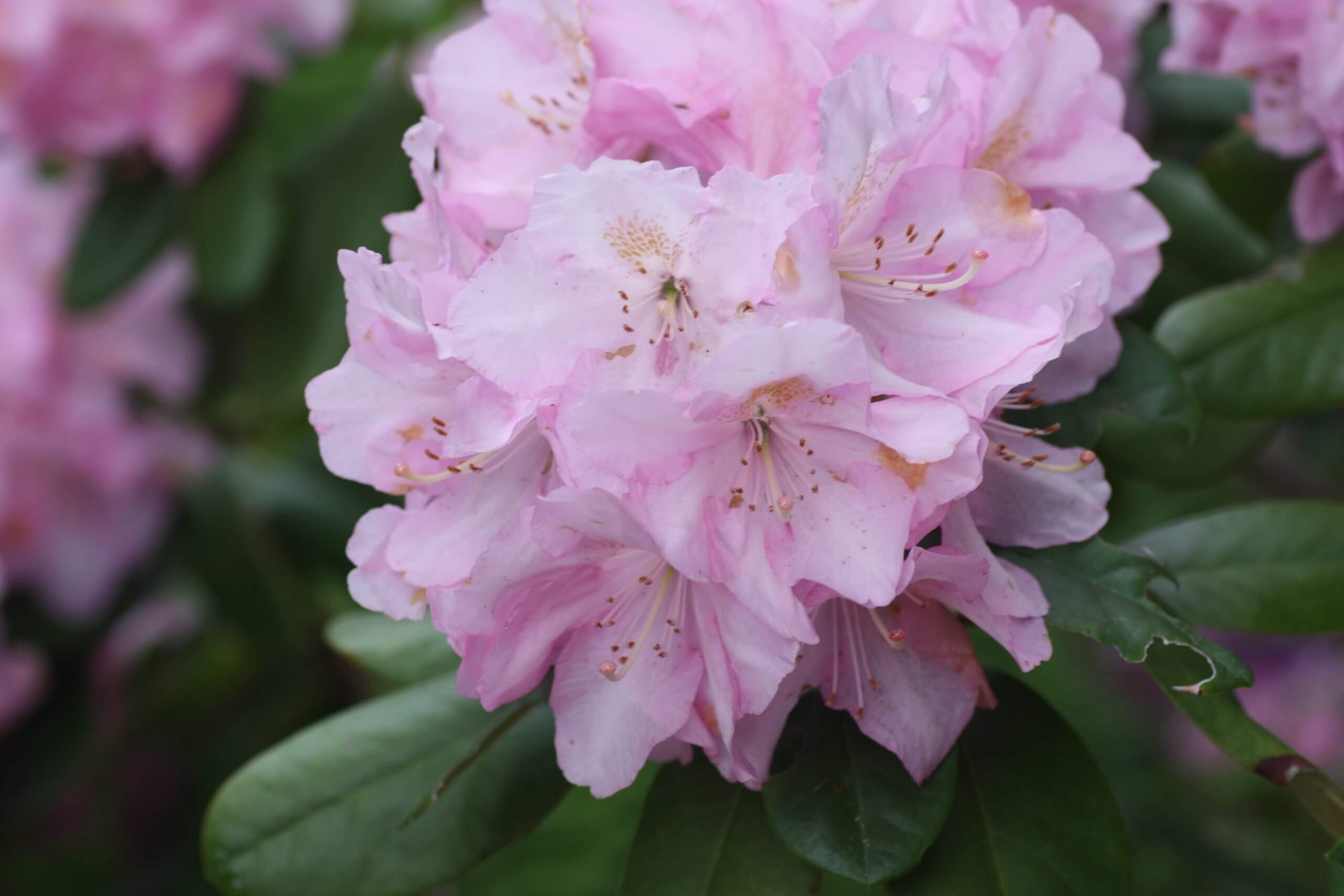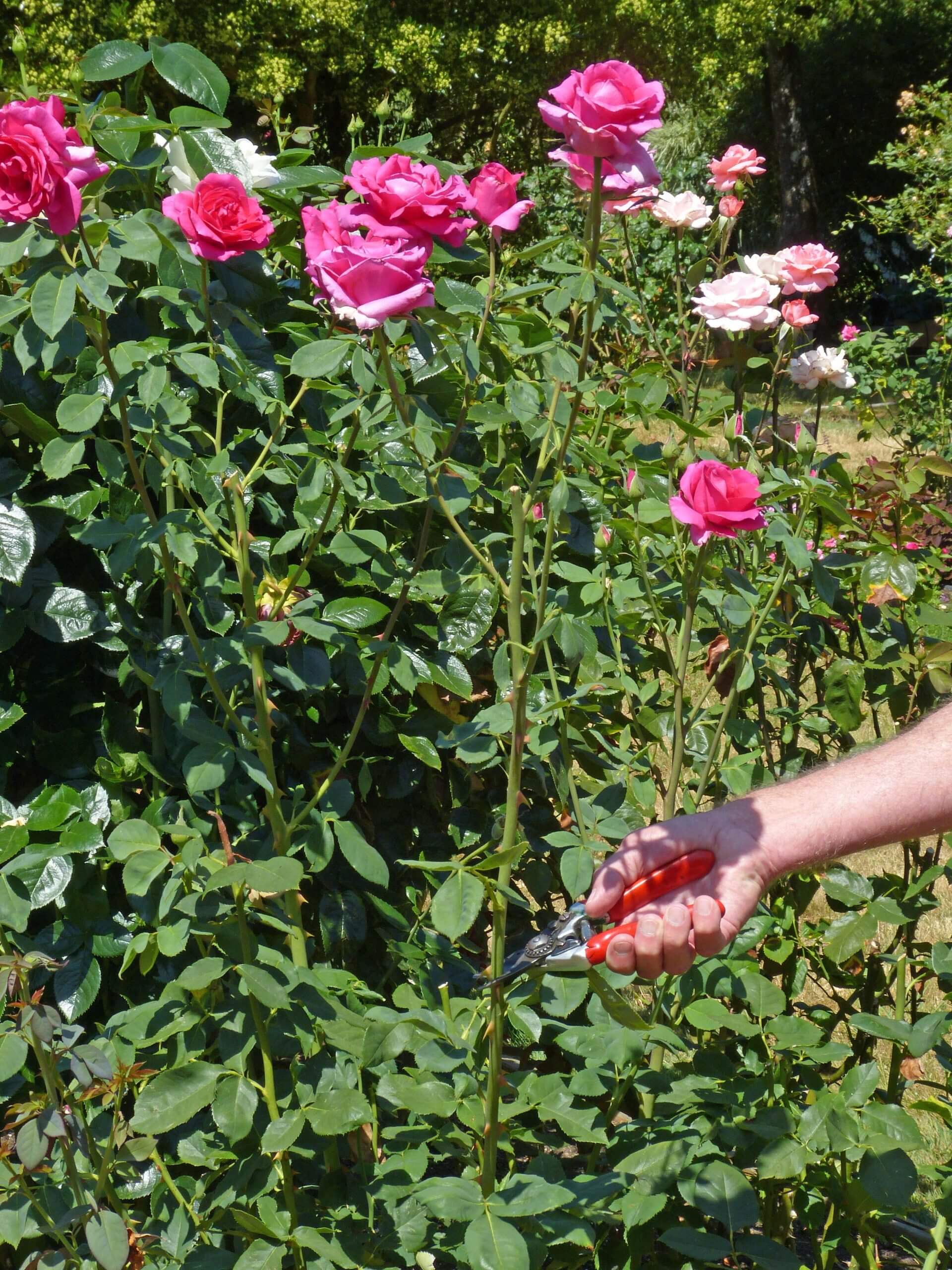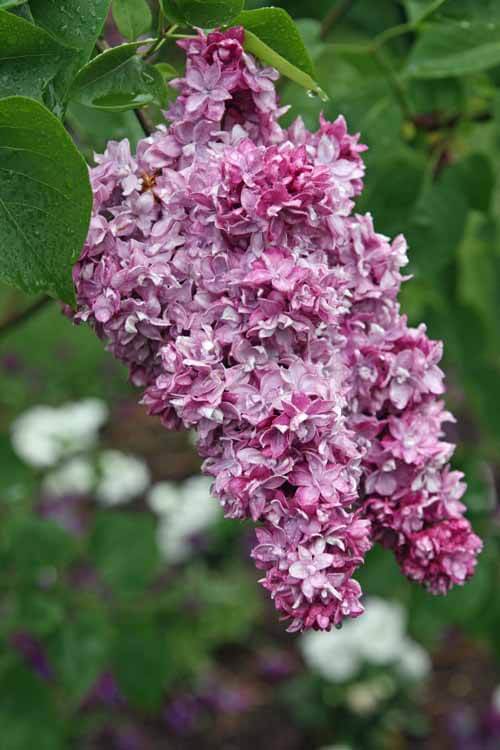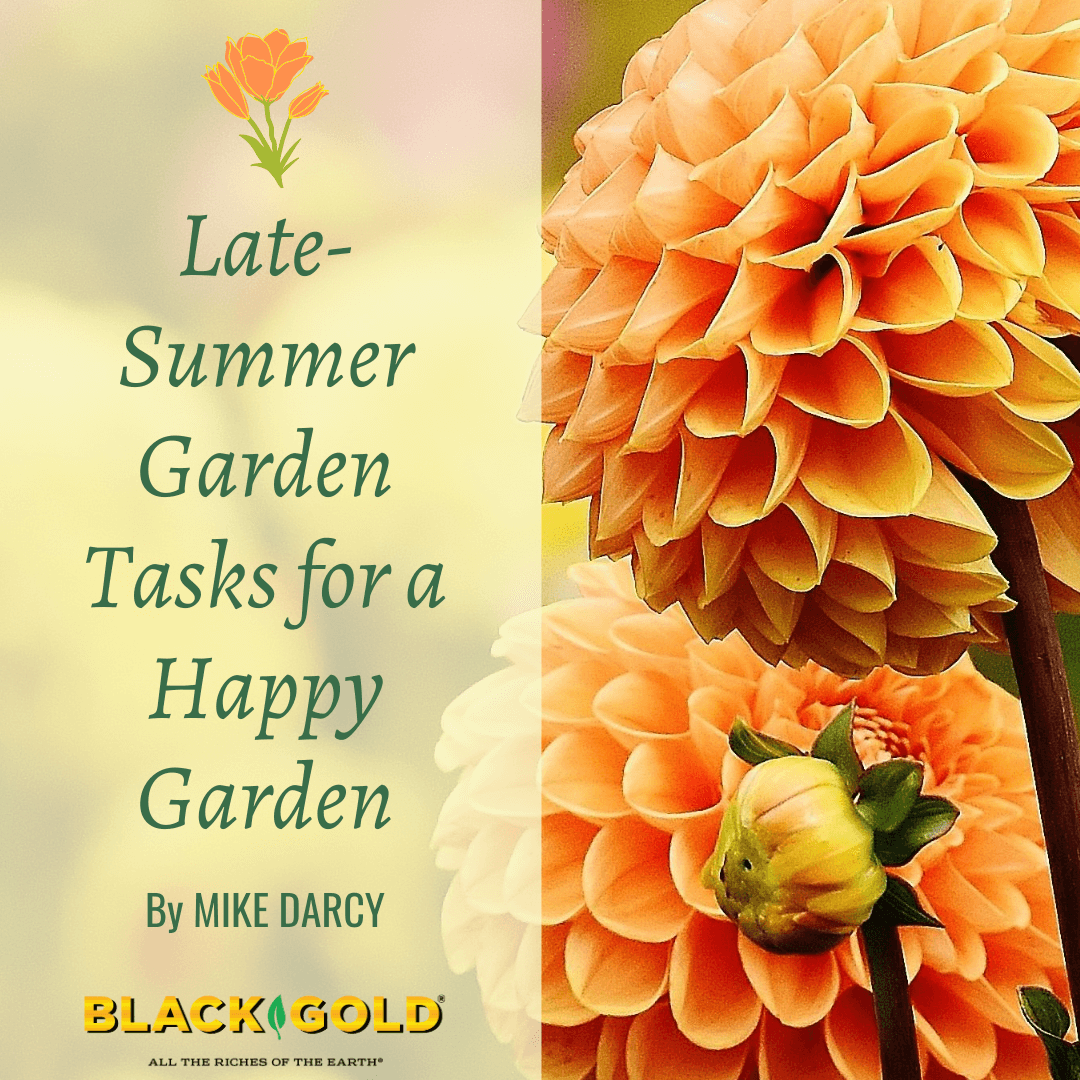
Sometimes this time of year is referred to as the “dog days of summer”; however, I do not think of it in these terms. Yes, it is hot, many garden flowers are flagging, and there are garden tasks to do, but August is also a month when there is much for us to enjoy in the garden. As I sit on my deck this August morning, I am surrounded by colorful pots of salvia, begonias, lobelia, heliotrope, abutilon, fuchsias, and even a Doris Day floribunda rose bush. But, to enjoy the late-summer garden, it needs daily care.
Groom Tired Flowers
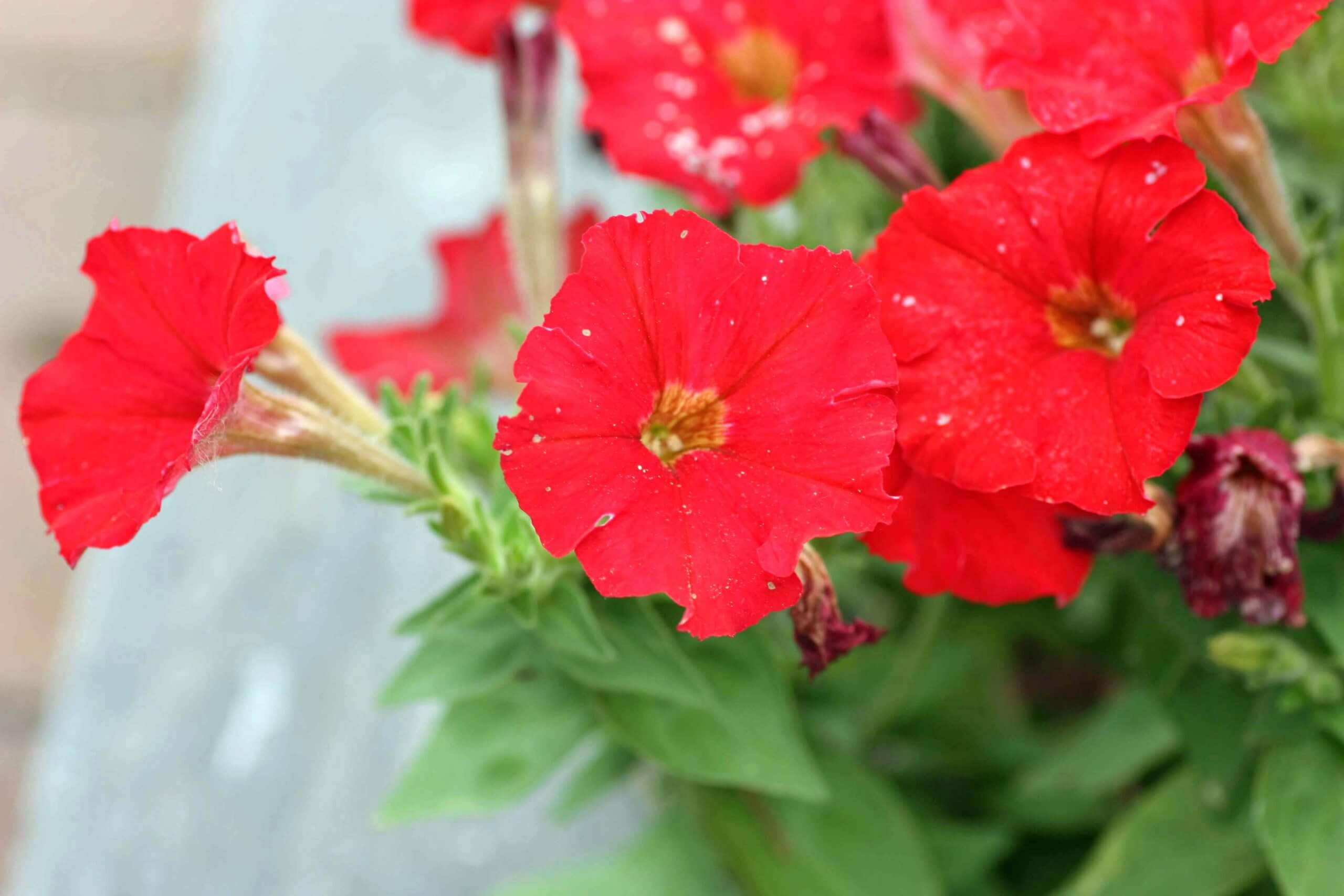
One of my early morning tasks is to remove old flowers and perform some general grooming to keep all my garden plants looking as good as possible. I carry a pair of sharp pruners and snip off any out-of-line branches, poor-looking foliage, or dying flowers. It takes little effort and keeps the garden looking its best. (For more detail, read Teri Keith’s recent article about pruning and deadheading garden perennials and annuals in midsummer.)
Cut Flowers for Bouquets
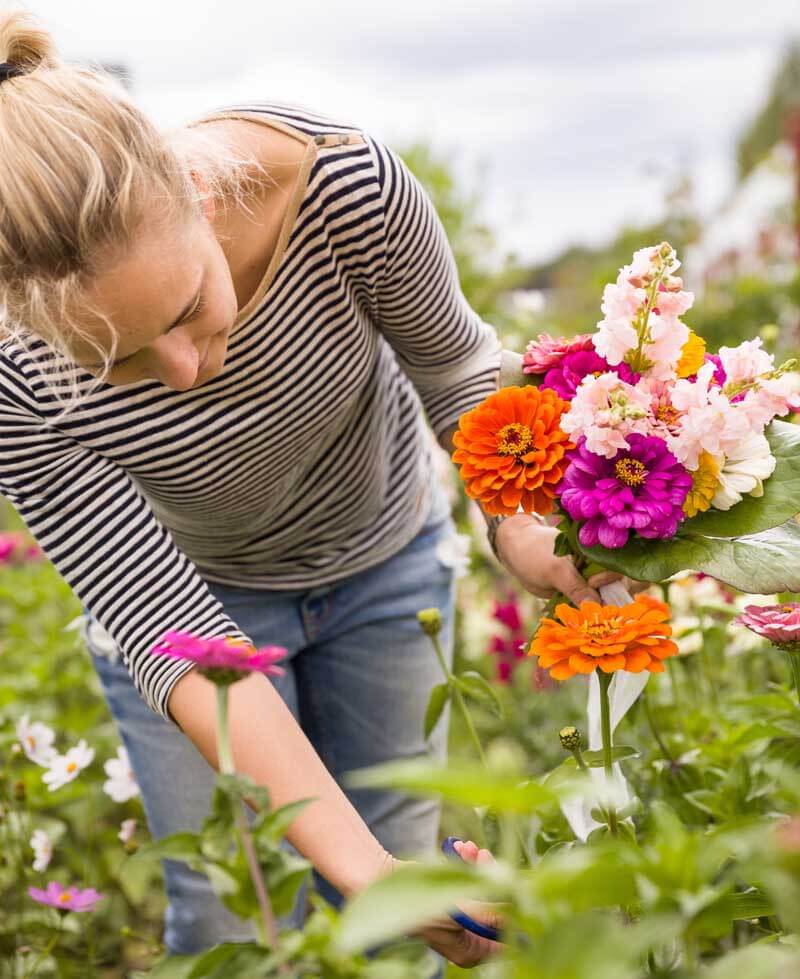
Dahlias are just coming into their prime blooming season and should continue to flower until about the middle of October. Yesterday, as I was walking my dog, a neighbor was cutting dahlias and gave me a beautiful bouquet. On hot days, dahlia foliage and flowers can quickly wilt in the summer sun, and a top dressing of Black Gold Garden Compost Blend can help alleviate this issue by helping to retain moisture. Cut dahlia flowers early in the day when they look their best and keep them picked to prolong their blooming season. (Click here to read our recent garden article detailing Jessie Keith’s favorite summer cut flowers.)
Feed Container Gardens
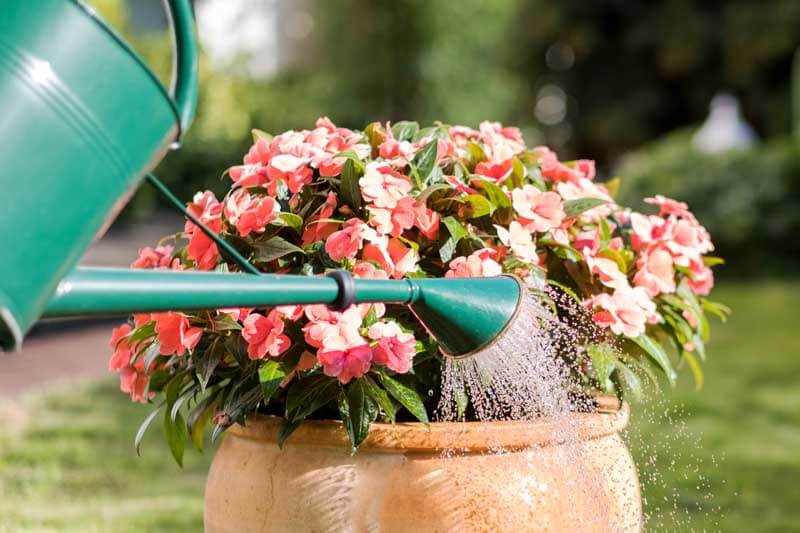
By the time August arrives, many plants in containers that have grown throughout the summer will have root systems that have begun to fill the container. Once roots fill a container, they will begin to circle the wall of the pot resulting in a pot-bound planting. This root mass will quickly become dry, and the plants will wilt from lack of water. I have found that some containers may need watering twice a day if it is hot and especially if there are drying winds. Don’t expect rain to supply the needed moisture as the foliage can be so thick that the water does not penetrate the soil. Water each container at the base of the plants until the water runs out of the bottom of the pot into the saucer or reservoir. August is also a good time to give plants in containers fresh all-purpose fertilizer because many of the original nutrients have leached out.
Prepare the Vegetable Garden for Fall
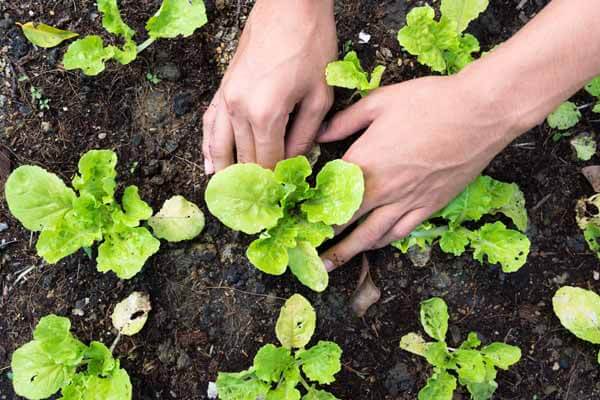
Some early-season vegetables may be on the decline. Remove them to make space for a fall vegetable garden. Add fresh amendments before planting fall vegetables. Black Gold Natural & Organic Ultra Outdoor Planting Mix is a great vegetable garden amendment that is OMRI Listed for organic gardening and contains mycorrhizae to encourage better growth, naturally.
It depends on the specific area you live in, but here in Oregon’s Willamette Valley, we plant peas can good herbs for the fall garden as well as beets, carrots, chard, lettuce, and kale as well as other brassicas. Now is the perfect time to purchase seeds and get your fall vegetables growing.
“Edit” Your Garden for Fall
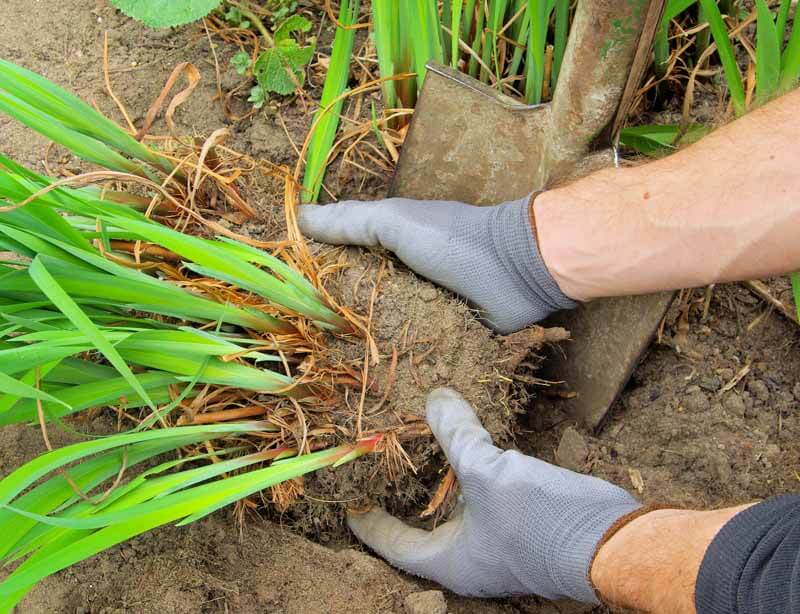
August is a good month to think about some garden editing. In my own garden, I occasionally plant plants in the wrong place, or perhaps they have grown larger than I had expected. When moving them to new locations, I make sure to remember where spring bulbs are planted, or I move the bulbs as needed. I also consider the surrounding area and how it might have changed in terms of light and wind. As trees and shrubs grow or are pruned, they may be casting shade on plants that need the sun or providing more sun to an area that was once shady.
If your garden has bearded or Siberian iris, late August is an ideal time to divide them. Often, beds of bearded iris decline in bloom because they are too crowded, while clumps of Siberian iris can quickly become too dense. Diving both about every three years will ensure that they bloom beautifully each spring and don’t overgrow an area.
Give Roses a Boost
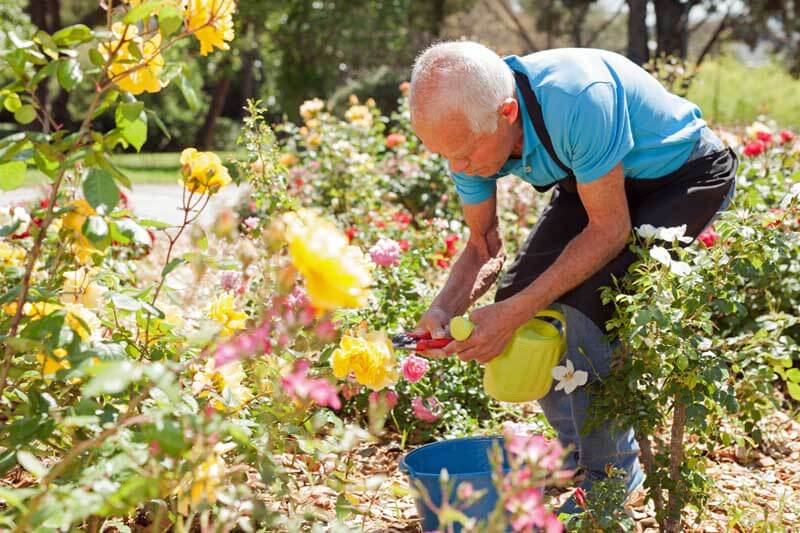
Keep roses picked and cut the stems long on hybrid-tea types for the vase. New growth will appear, and the new flowers of fall will be more at eye level where their scent can be best enjoyed. Fertilize roses one last time before spring.
In these troubling times, our gardens, whether large or small, can offer us a hiatus from some of the negative forces around us. Even a small area on a deck, balcony, or patio can give us some respite from the world in which we live. Enjoy your plants, and realize that they don’t know what is going on around them. Give them water and nurture them, and they will provide you with much pleasure.




